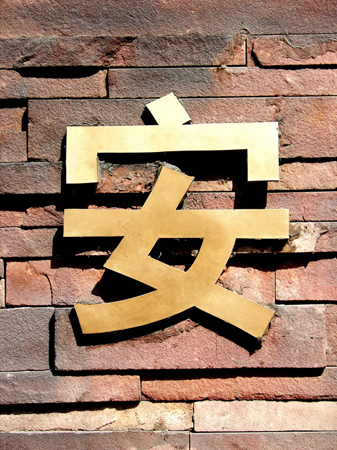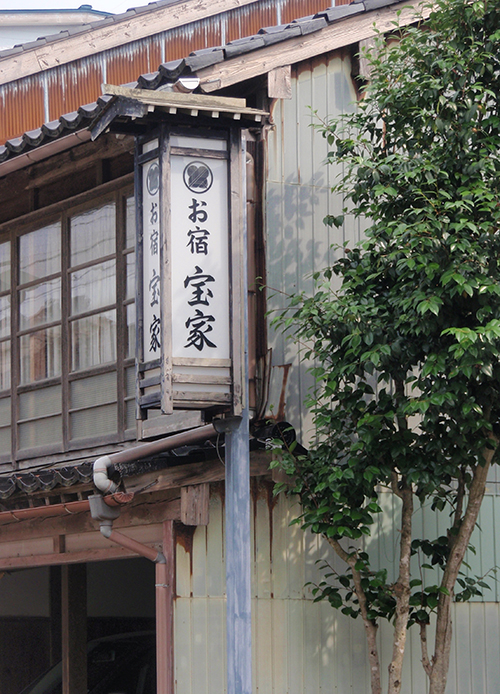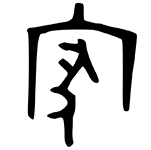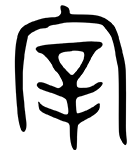40. The "Katakana U" Radical: 宀
The "katakana u" radical 宀 sits atop characters such as these:
寒 (245: cold; poor)
定 (351: to decide, set, settle; regular; constant)
宗 (889: religious sect; religion; head of a clan)
That "crown" position is known as かんむり (冠) in the kanji world. (For more on this terminology, see "Radical Terms," particularly the third section, "Radical Positions.") Along the way, someone decided that 宀 looks like ウ, which represents u in katakana. (Do they really look that similar?) Thus, the name of our radical is うかんむり, meaning "crown like the katakana u." Simply put, it's the "katakana u" radical. Other English nicknames include "roof" radical, "crown" radical and "kana u" radical. That last one sounds like the nickname of a university!
When this radical is on duty in Joyo kanji, it is always at the top of a character. By contrast, when 宀 is a mere component, it can shift to other places in a kanji. It's on the upper right in these examples:
館 (247: building)
縮 (893: to contract)
棺 (1107: coffin)
And 宀 is on the upper left here:
額 (635: amount)
割 (823: to divide)
I found two Joyo kanji in which the 宀 component is not at the top:
管 (443: tube; to exercise control over)
崇 (1465: reverence; worship)

Here's the kanji in the spotlight:
安 (223: peaceful, safe; inexpensive; easy)
Our radical always has three strokes and has no variant shapes, although the dot at the top can lean to the left, as you see here. Also, the remaining vertical strokes in 宀 can be angled for stylistic flair. We see that in the next picture.

Photo Credit: Eve Kushner
All three kanji feature our radical! We have a 100 percent hit rate! Here's the way to read the sign, which I spotted on Sado Island in Niigata Prefecture:
お宿 (おやど: lodging)
宝家 (たからや: name of an inn)
The three kanji are as follows:
宿 (505: lodging)
宝 (971: treasure)
家 (83: house)
Does 宀 Look Like Any Other Radicals?
I wondered if 宀 were the on-duty radical in 字 (28: character). No, the "child" radical 子 is at work there. That's also true in 学 (10: study). By the way, the strokes above the 子 in 学 don't constitute a radical at all, though they look as if they would!
If you're seeking radicals to distinguish from 宀, you're in luck. These are similar:
radical 8: the "lid" radical 亠
radical 9: the top of 食, which is a variant of the "person" radical 人
radical 14: the "katakana wa" radical 冖
radical 53: the "dotted cliff" radical 广
radical 104: the "sickness" radical 疒
radical 116: the "hole" radical 穴



These images, courtesy of Richard Sears, are seal-script versions of the following characters:
家 (83: house)
宰 (1288: to be in charge)
宛 (1342: address)
Collectively, the images show that our radical once enclosed characters. Since then, the shape has shrunk and now "protects" only the tops of kanji. It's as if they once wore full armor but currently sport only bike helmets!
Photo Credits: Eve Kushner
In two more signs, all the kanji have the same radical.
First, on a ferry, we find 客室 (きゃくしつ: guest cabin), which breaks down as visitor + room.
Then, in an architecture museum, we have 寝室 (しんしつ: bedroom), which breaks down as sleeping + room.
What's the Etymology of the 宀 Radical?
In a way it makes sense that characters with the 宀 radical would pal around together. It typically means "building" or "roof," so we're likely to find multiple kanji with this radical in words related to inns, houses, and the like.
In the following etymologies, all from Henshall, 宀 represents "building," "roof," or "house":
客 (252: visitor; customer; object; skilled person)
The 各 generally means "each" but in this case means "visit and stay." As this 宀 means "building," we have a "person who visits a building," especially a house—namely, a visitor.
宮 (256: palace; imperial family member; shinto shrine; constellation)
Again 宀 means "building." The 呂 (2136: ロ sound) is often used to mean "joined blocks" but means "joined rooms" in this case, "suggesting a building of considerable size." Henshall notes that "it" became particularly associated with "temples and palaces." I think his "it" refers to 宮, not just 呂. In fact, the "joined rooms" and "large building" parts of his etymology might also be about 宮. His explanation is unclear, but I included it because I love the idea that joined rooms under a roof make a palace!
官 (441: government; government official; bodily organ)
Until now I never realized that 宮 and 官 look alike! In the latter kanji, the part below the radical represents "buttocks," though that lower shape acts phonetically here to express "work" and probably "sedentary." Our radical means "building," so 官 symbolizes a "person doing sedentary (i.e. clerical) work in a building." That came to have associations with a government official.
寡 (1053: few; widow)
The top means "house," the middle (頁) means "face" (representing "person" here), and the lowest part (分) means "divide." Together these bits indicate a "person separated from others and alone in a house." That referred to "widow," also conveying the idea of "minimum" because that's a minimum family. "Few" is an associated meaning.
Our radical means "roof" in the next two characters, says Henshall, though they have evolved to mean that in a more abstract sense:
宇 (811: universe)
The part below the 宀 once had a more complicated shape that essentially represented a "waterweed twisting up to the surface" and that meant "seeking an exit." Anyway, 宇 originally meant "roof that completely covers," by extension coming to mean "heaven."
宙 (935: outer space; midair)
The 由 here represents "basket," by extension conveying "to contain." Thus, 宙 symbolizes "that contained under a roof." Eventually, this came to refer to the heavens, outer space, and the sky.
I think of the sky as being well beyond my roof, but I guess we all live under a roof of a different sort.

Photo Credit: Lutlam
Our radical appears in three of the six kanji in this sign. Here's what it says:
警察官立ち寄り所
Place Where Police Officers Drop In
警察官 (けいさつかん: police officer);
立ち寄り所 (たちよりじょ: place where one drops in)
This type of sign, which one can see in just about any kind of shop, is an attempt to deter would-be criminals.
These are the three kanji crowned here with the "katakana u" radical:
察 (489: examining)
官 (441: government; government official)
寄 (642: to visit)
